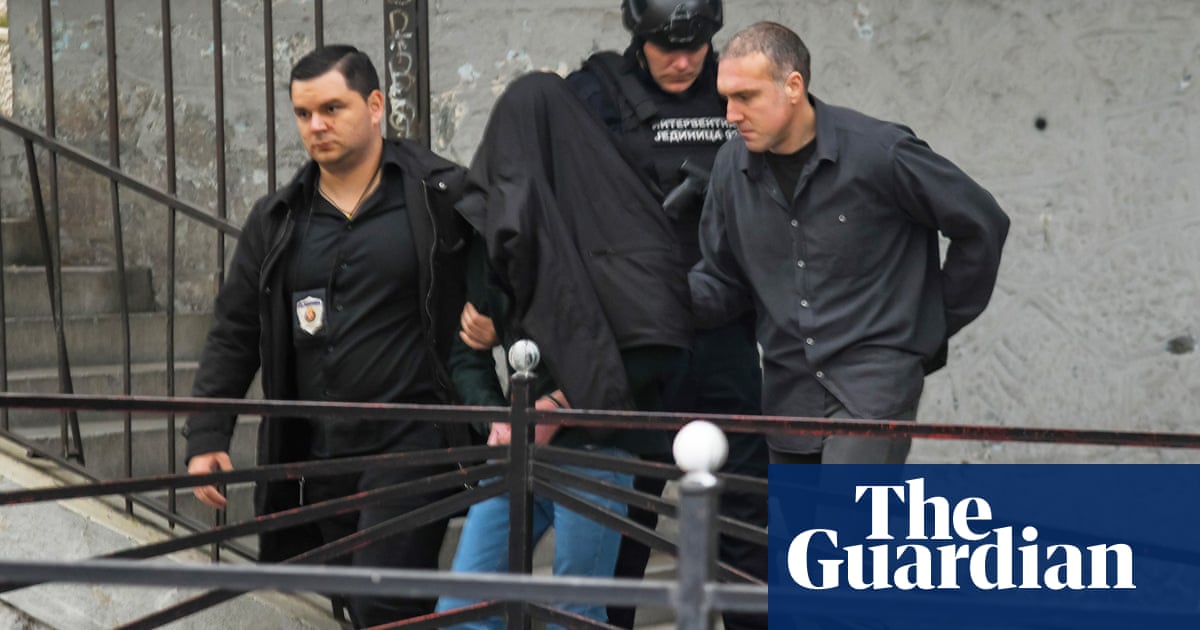
Iranian schoolchildren were being arrested inside school premises on Sunday by security forces arriving in vans without licence plates, according to social media reports emerging from the country as protests against the regime entered their fourth week.
The authorities also shut all schools and higher education institutions in Iranian Kurdistan on Sunday – a sign that the state remains concerned about dissent after weeks of protests over the death of Mahsa Amini, a 22-year-old Kurdish woman.
Footage showed protests in dozens of cities across Iran early on Sunday, with hundreds of high-school girls and university students participating in the face of teargas, clubs, and, in many cases, live ammunition by the security forces, rights groups said. Tehran has denied that live bullets have been used.
On Saturday, Iran’s main news channel was briefly hacked and interrupted with images and messages in support of the continuing protests. Footage of the supreme leader, Ali Khamenei, in a meeting with state officials was replaced by images of protesters who have died.
An image showing Khamenei in crosshairs and in flames was also aired during the interruption, for which the hacktivist group Edalat-e Ali claimed responsibility. The images were accompanied by the words “join us and rise up”.
The semi-official Tasnim news agency confirmed that the state TV news broadcast “was hacked for a few moments by anti-revolutionary agents”.
The scale of the continuing protests is disputed, with government officials claiming that western-backed media are giving a false picture of scattered gatherings that quickly dissolve once the security forces arrive. However, the Norway-based Iran Human Rights group said on Saturday that at least 185 people, including at least 19 children, have been killed in the countrywide demonstrations. Social media showed large, but not huge, crowds denouncing the regime in Tehran on Saturday night.
Supporters of the protests, which were first sparked by the death of Amini after being arrested by the morality police in Tehran for not wearing the hijab correctly, say the persistence and originality of the often spontaneous demonstrations shows the depth of young people’s alienation from an elderly and socially reactionary ruling class that is out of touch with their values and attitudes.
Despite the pictures of vans arriving at schools, the Iranian education minister, Mohammad Mahdi Kazem, said no expulsions from schools had been issued. He said the parents of students involved in the protests were being contacted.
Concern about the fate of children was confirmed to the Guardian. Mateen, a 20-year-old technology student from Rasht said her family became worried about the fate of her sister, Naznin, 16. “My mother’s brother called us this morning and urged us to pick up Naznin from school. He has friends in the media who warned him that schoolgirls and boys from Bandar Abbas were arrested by the repressive forces.
“My parents panicked and picked up my sister from school after uncle asked them to do so asap and said that police may attack the schools,” added Mateen.
Families have also urged their children to avoid sharing protest pictures and videos, especially on Twitter. “Twitter has shaken the core of the Iranian regime. They can’t control it any longer. We’ve warned Naznin and her friends to blur their faces, at the minimum. But there’s only that much you can tell a teenager.”
The Iranian president, Ebrahim Raisi, met with security officials to discuss how to make the clampdown more effective. Afterwards, Iran’s deputy interior minister for security affairs, Seyed Mirahmadi, said: “Yesterday, aside from Tehran and Sanandj, the country was completely peaceful … From now on, those who are arrested in the riots will stay in jail until put on trial. They will be rapidly prosecuted and their sentences will be decisive and set as a deterrent.”
Business groups said the repeated internet blackouts being imposed by the regime on platforms such as Instagram was severely damaging business activity, with the sales of small- to medium-sized enterprises down by between 40% and 70%. Security officials are nervous of relaxing the controls for fear of allowing protesters to send out live pictures of what is happening, as well as enabling them to remain in better contact with one another.
The Oslo-based Kurdish human rights group Hengaw claimed that security forces shot at the protesters in Sanandaj and Saqqez, with two protesters killed on Saturday. It said in total 18 minors had been killed.
The group later said clashes were continuing into the night in Sanandaj and Saqqez, along with Kermanshah, Bukan, and Fardis. The widely followed Twitter account of Tavsir1500, which sends out videos of the protests, also reported shootings at demonstrators in Sanandaj and Saqqez.
Videos shared by Hengaw showed young women or girls chanting “woman, life, freedom” at a school in Saqqez, Amini’s home town in Kurdistan province.
The German foreign minister, Annalena Baerbock, pledged again that the EU would impose travel bans and asset freezes on Iranian officials trying to suppress the protests. She told the newspaper Bild am Sonntag: “Anyone who beats up women and girls in the streets, abducts people who want nothing more to live freely … is on the wrong side of history.”
A state coroner’s report on Friday said Amini’s death was not caused by any blow to the head and limbs. It did not say whether she suffered any injuries.
The report linked Amini’s death to existing medical conditions, an explanation rejected by her family.
Two other teenagers were killed in the protests, according to their mothers. The state claims that both fell from rooftops in separate suicides, partly due to internal family disputes.












